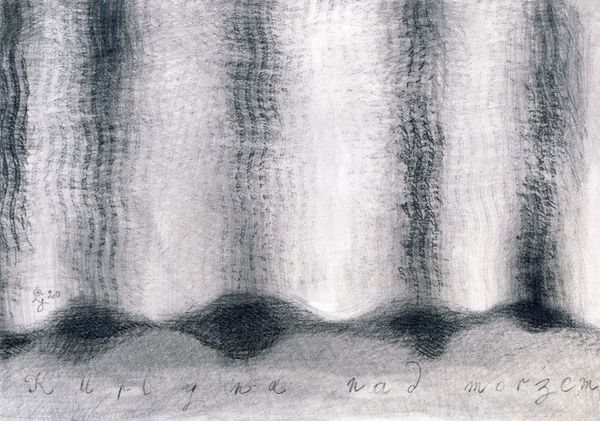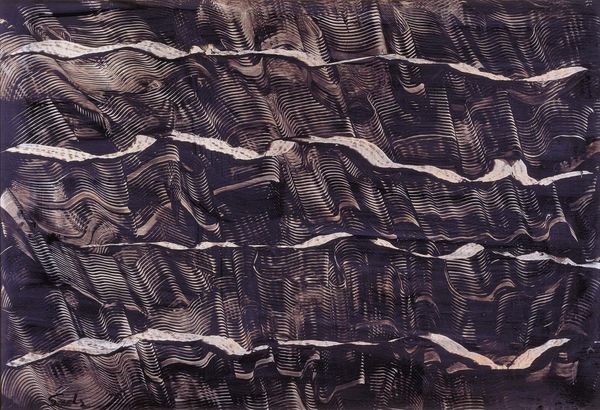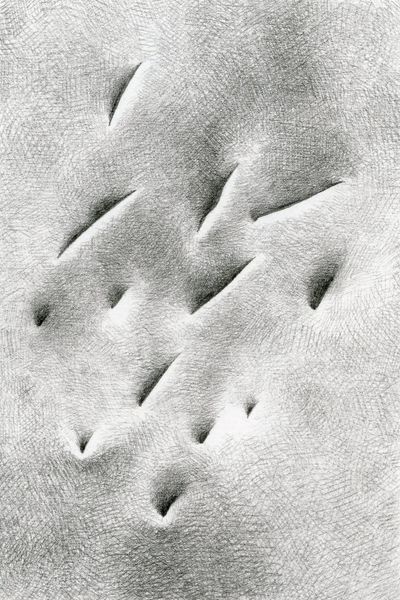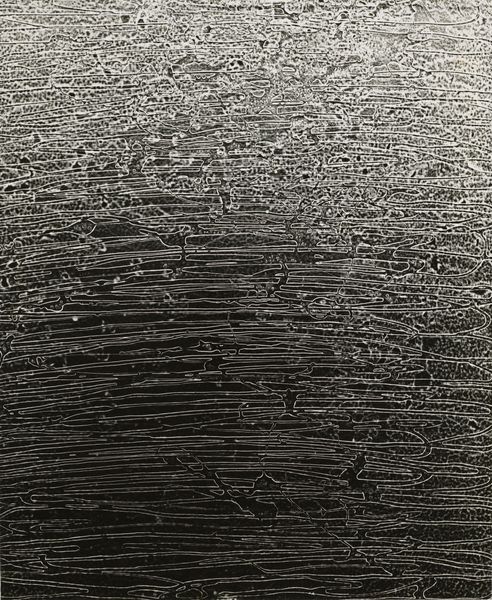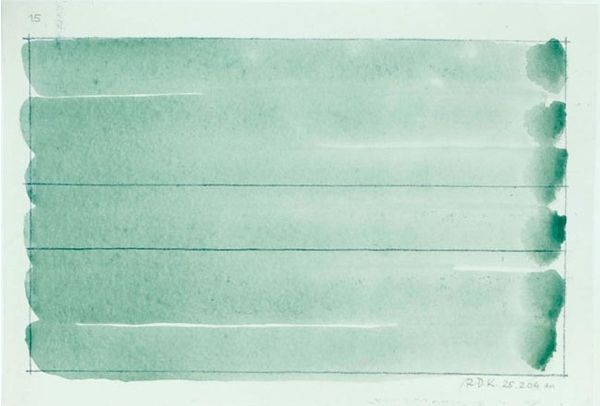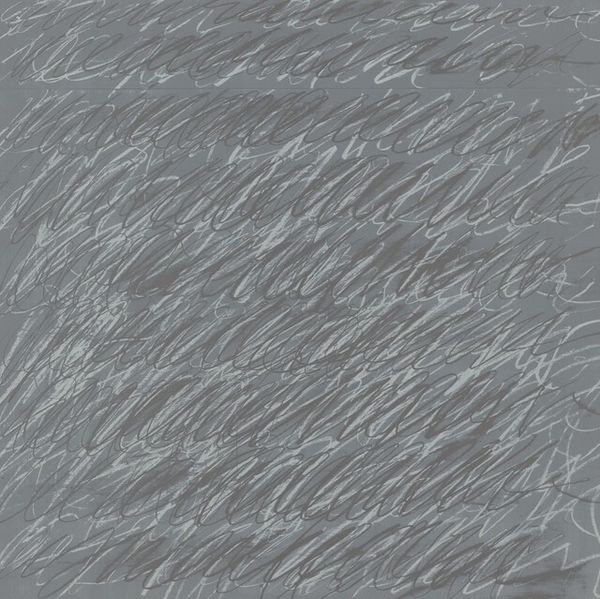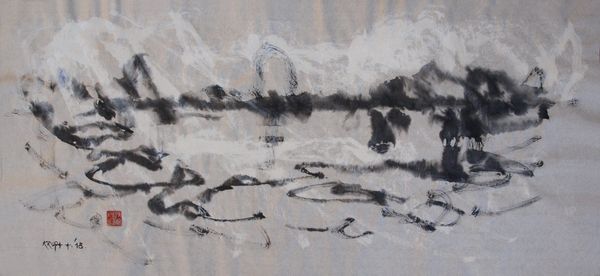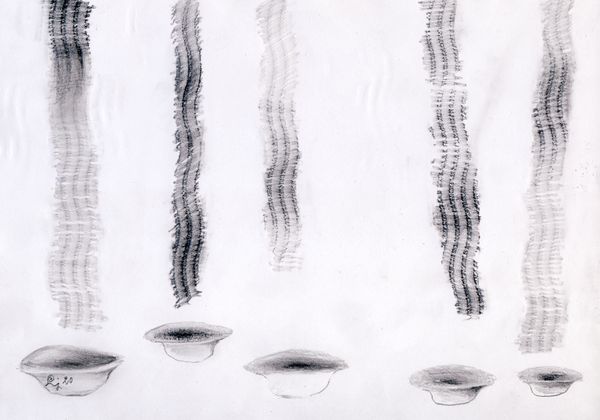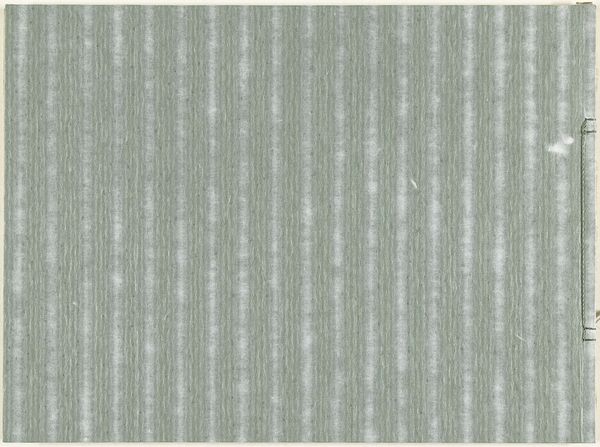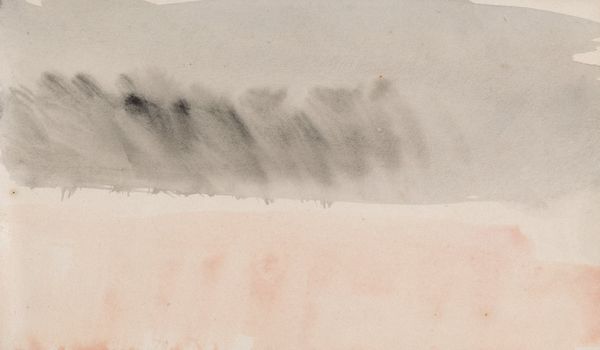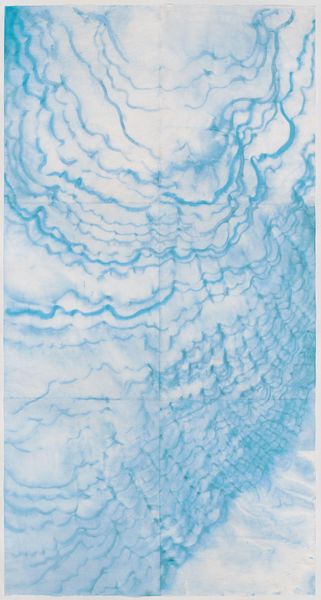
drawing, textile, paper, graphite
#
drawing
#
textile
#
paper
#
geometric
#
abstract-art
#
line
#
graphite
#
abstract art
Dimensions: 21 x 30 cm
Copyright: Lech Jankowski,Fair Use
Curator: Lech Jankowski's "Kurtyna nad morzem 2," or "Curtain by the Sea 2," made in 2019. It's rendered with graphite on paper and what looks like a textile application. Editor: It immediately strikes me as a very atmospheric piece. The tonality is quite soft, almost hazy, which contributes to the dreamlike quality of the drawing. Curator: Exactly, Lech seems interested in capturing that sense of hazy longing one gets when considering landscape. "Kurtyna" evokes that kind of introspective space—the "sea curtain" is not just an aesthetic choice; it becomes a screen onto which we project societal anxieties related to borders and natural limits. Editor: Yes, it's more of an evocation of a curtain or the sea than a literal representation. The formal repetition of horizontal lines—those wavelike shapes—creates a rhythm that's very compelling. How the textile layering gives the piece more visual and textural interest. Curator: Thinking about that visual rhythm in relation to the work's themes, I see echoes of feminist discourse questioning fixed categories. The unstable 'curtain' can then be interpreted as embodying an intersectional, transformative state, shifting according to our engagement with the sea, nature, identity. Editor: From a compositional perspective, the title is just below the curtain and water, a detail reinforcing the symbolic interplay between image and text. I see a sort of deconstruction; it reminds me of analytical cubism in some ways. Curator: But to what extent is the symbolic disruption in dialogue with real-world implications, or simply an experiment in line and form? What social forces might the artist subtly represent? Is there a reading of eco-criticism related to climate issues and environmental transformations, as presented through material use? Editor: All relevant points; however, its strength lies precisely in its formal ambiguity and visual construction. These elements free it from being tied to any specific sociopolitical narrative. For example, in what ways do the shapes influence your perceptions? Is the sea calm or agitated? What would the experience of the artwork be if these marks were placed elsewhere? Curator: Well, ultimately, art should invite precisely these kinds of conversations, recognizing that readings of artworks are inextricably linked to both formal approaches and wider historical narratives that form our contemporary landscape. Editor: Indeed, and with Jankowski’s "Kurtyna," the stark rendering against such heavy subject matter leaves plenty to interpret, from whatever angle one chooses to observe.
Comments
No comments
Be the first to comment and join the conversation on the ultimate creative platform.
